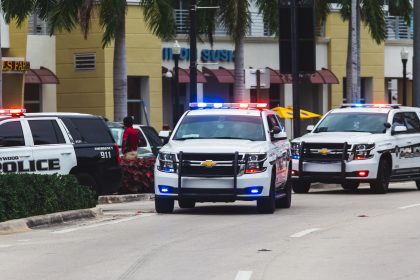The pursuit of justice never truly ends, even when cases go cold. Across the country, investigators are revisiting unsolved homicides and disappearances that have haunted communities for years, sometimes decades. While forensic breakthroughs have recently resolved several high-profile mysteries, many families continue their agonizing wait for answers about loved ones who vanished or were found dead under mysterious circumstances.
As law enforcement agencies increasingly adopt sophisticated DNA analysis and genealogical techniques, cases once considered hopeless are yielding new evidence and suspects. These technological advances are reshaping how investigators approach cold cases, offering renewed hope to families who have waited years for resolution.
Recent breakthroughs in decades-old crimes
Several cold cases have seen significant developments in recent months, providing long-awaited answers to affected families:
- After 34 years without resolution, Kenneth Perry was arrested for the 1990 murders of siblings John and Pamela Sumpter in DeKalb County, Georgia. Modern DNA testing connected him to evidence from the crime scene that had remained unmatched for over three decades.
- The 1985 murders of Harold and Thelma Swain during a Bible study in Georgia remained unsolved until 2024, when Erik Kristensen Sparre was arrested. Investigators determined he had fabricated his alibi at the time of the killings, allowing him to evade justice for nearly four decades.
- Human remains discovered in a burning bag in Georgia were identified in 2023 as belonging to Nicole Alston. Her friend, Angel Marie Thompson, now faces charges of concealing her death after allegedly using Alston’s identity for financial purposes.
- Shakeira Yvonne Rucker, a mother of four, was found deceased in a storage unit owned by her estranged husband, Cory Hill. Authorities have since charged Hill with her murder, bringing some closure to a case that had initially begun as a disappearance.
- The controversial 2013 death of Kendrick Johnson, found in a wrestling mat at his school, continues to generate debate about potential cover-ups involving local law enforcement and classmates, despite years of investigation.
Cases that remain shrouded in mystery
Despite technological advances, many cold cases continue to baffle investigators and torment families:
- Teenage twins Dannette and Jeanette Millbrook vanished without a trace in 1990. Though their case was reopened in 2013 after years of neglect, no definitive evidence has emerged to explain their disappearance or whereabouts.
- JoAnne Vickie Smith remained unidentified for nearly five decades after her 1976 death until being named in 2024. Despite this breakthrough, investigators have yet to determine who was responsible for her death or the exact circumstances surrounding it.
- The death of Hattie DeBardelaben while in police custody in 1945 was concealed from her family for generations. Only recently did relatives learn the truth about her death, though full accountability remains elusive after so many decades.
- George Tompkins died in 1922 in what was initially classified as a suicide. A century later, in 2022, authorities reclassified his death as a homicide based on new analysis of historical evidence, yet no suspects have been identified.
The science transforming cold case investigations
Modern forensic techniques have revolutionized how investigators approach long-dormant cases:
DNA testing advancements now allow analysts to extract usable genetic material from evidence that was impossible to process when first collected. Samples previously deemed too degraded or minimal can now yield crucial information connecting suspects to crime scenes.
Forensic genealogy has emerged as a powerful tool in identifying both victims and perpetrators. By building family trees based on DNA samples and cross-referencing with publicly available genetic databases, investigators can narrow suspect pools even when the perpetrator’s DNA isn’t directly in criminal databases.
Public engagement through social media and specialized true crime platforms has generated new leads in cases that had previously gone cold. Community tips often provide contextual information that helps investigators connect seemingly unrelated evidence into meaningful patterns.
The human cost of unsolved crimes
Behind each cold case are families who have endured years, sometimes decades, of uncertainty. Many describe living in a state of suspended grief, unable to fully process their loss without knowing what happened to their loved ones.
For communities, unsolved violent crimes create lingering fear and distrust, particularly when victims come from marginalized populations whose cases historically received less attention from authorities and media. Recent efforts to revisit such cases represent an attempt to address historical inequities in the justice system.
Law enforcement agencies increasingly recognize the value of dedicated cold case units that can devote specialized resources to these challenging investigations. These teams often bring fresh perspectives to evidence that may have been overlooked or misinterpreted during initial investigations conducted with more limited technological tools.
The future of cold case resolution
As forensic science continues to advance, experts anticipate more breakthroughs in cases currently considered unsolvable. Artificial intelligence tools are beginning to help investigators identify patterns across seemingly unrelated crimes, potentially connecting cases that were previously viewed in isolation.
Private laboratories specializing in advanced genetic techniques now partner with law enforcement to tackle especially challenging cases. Organizations like the DNA Doe Project have helped identify numerous victims who remained nameless for decades.
For families waiting for answers, these scientific advances represent hope that their loved ones will not be forgotten and that those responsible will eventually face justice, regardless of how much time has passed.
The resolution of these fifteen cases, whether through recent breakthroughs or continued investigation, demonstrates that the passage of time does not diminish the importance of seeking truth and accountability for victims of violent crime.











